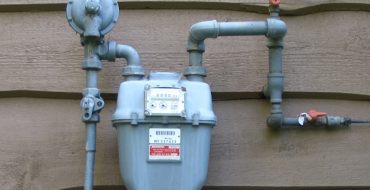Both gas meters and gas leak detectors are vital tools for ensuring that dangerous gasses are kept in check and people are alerted to the presence of gas in the environment. Standard gas meters are used to gain an overall measurement of gas usage in installations, whereas gas leakage detectors – quite affectionately known commonly as ‘sniffers’ – are used to measure the leakage of gas from a pipe or other contains such as a tank.
There are also personal gas detectors which measure either single or 4 gasses. There are usually used in mines, pits and in confined spaces where gasses may be present. These generally operate at specific PPM levels.
Calibration of these devices is extremely important. When a device isn’t calibrated it isn’t displaying results accurately, meaning that the safety level of the tester you’re using is compromised. In the case of gas equipment, incorrect readings could be the difference between life and death.
Sniffers (or detectors) provide the first clues of contaminants in the nearby environment. You need to know when a surrounding atmosphere is deficient in oxygen, or over-enriched with oxygen and possibly highly flammable and explosive. In other words, whether detecting a natural gas leak or the escape of carbon monoxide, hydrogen sulphide, ammonia or oxygen, a properly functioning gas detector saves lives. An inaccurate and badly calibrated gas detector endangers lives.
Just imagine you were working in an industrial environment where a particular type of gas is being used to manufacturer a product. In smaller doses this gas might be perfectly acceptable to humans, but if there was to a gas leak, the larger dose could cause extreme danger to humans in the environment nearby. Also imagine that this gas is completely colourless. In normal circumstances a gas leak detector would sound an alarm to let you know about a sudden spike in gas content, but if the device was incorrectly calibrated this alarm might not sound, leaving you to stay in the hazardous gas while the leak intensifies.
Gas meters today are designed to measure a number of different gases such as carbon monoxide, hydrogen sulphide and oxygen all at the same time. Some multiple gas sensors also include detection of chloride, hydrogen cyanide, ozone, fluorine and nitrous oxide in one probe. These probes can also measure other values such as temperatures and pressures. Since these probes are so integral to the overall efficiency of a gas installation the calibration of the probe and the meter it is attached to is extremely important. An incorrect reading on your gas meter could lead to an incorrect concentration of gasses inside an installation such as a boiler, potentially endangering the lives of the people who reside in or work at that property.
The same applies to heavy industries such as electrical power generation. Here, gas meters need to demonstrate accuracy and reliability and must be able to register correct measurements during periods of uncertainty when operating temperatures and pressures change. These meters need to measure gases in different states and sometimes when they are condensing into liquids. The gases can be extremely hot and corrosive. Some can be sweet, meaning they have a low sulphur content, or sour with high sulphur, while some others may be highly compressed.
We really can’t stress enough the importance of regularly calibrated sensitive gas equipment. If your device has been in circulation for around a year without calibration you shouldn’t delay and get your calibration performed as quickly as possible.
Written by Barry Atkins at www.calibrate.co.uk





Comments are closed.